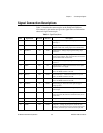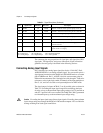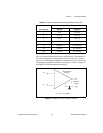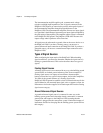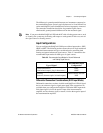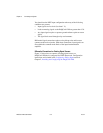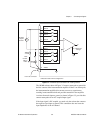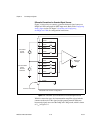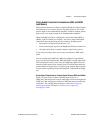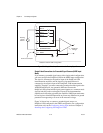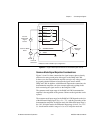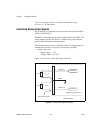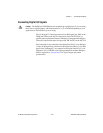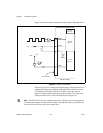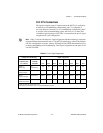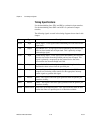Chapter 3 Connecting the Signals
© National Instruments Corporation 3-11 DAQCard-1200 User Manual
Single-Ended Connection Considerations (RSE and NRSE
Input Modes)
Single-ended connections are those in which all DAQCard-1200 AI signals
are referenced to one common ground. The input signals are tied to the
positive input of the instrumentation amplifier, and their common ground
point is tied to the negative input of the instrumentation amplifier.
When the DAQCard-1200 is configured for single-ended input (RSE or
NRSE), eight AI channels are available. You can use single-ended input
connections when the following criteria are met by all input signals:
• Input signals are high level (greater than 1 V).
• Leads connecting the signals to the DAQCard-1200 are less than 15 ft.
• All input signals share a common reference signal (at the source).
If any of the preceding criteria are not met, you should use DIFF input
mode.
You can configure the DAQCard-1200 using software for two different
types of single-ended input modes, RSE and NRSE. Use RSE input mode
for floating signal sources; in this case, the DAQCard-1200 provides the
reference ground point for the external signal. Use NRSE input mode for
ground-referenced signal sources; in this case, the external signal supplies
its own reference ground point and the DAQCard-1200 should not supply
one.
Single-Ended Connections for Floating Signal Sources (RSE Input Mode)
Figure 3-5 shows how to connect a floating signal source to a
DAQCard-1200 configured for single-ended input. You must configure the
DAQCard-1200 analog input circuitry for RSE input mode to make these
connections. For configuration instructions, refer to the Configuring
Analog Input section of Chapter 2, Installing and Configuring
the DAQCard-1200.



